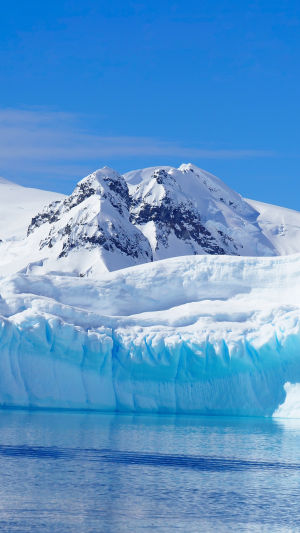Glaciers, the massive rivers of ice that silently flow across landscapes, are much more than awe-inspiring natural wonders.
They are vital players in the global ecosystem, with a profound impact on our planet's climate and environment.
From influencing weather patterns to supplying fresh water, glaciers are crucial to life on Earth.
However, as they melt at an alarming rate due to climate change, the consequences are far-reaching and potentially devastating.
<h3>The Climate Connection</h3>
Glaciers are often referred to as the "early warning signs" for climate change, and for a good reason. They are highly sensitive to temperature changes and thus provide clear indicators of global warming. As the Earth’s temperature rises, glaciers begin to melt more rapidly than they can be replenished by snowfall. This melting contributes to sea level rise, which threatens coastal communities worldwide.
If Antarctica Melts, Who Actually Survives?
Video by Uncovering
But glaciers do more than just hold water. They help regulate the Earth’s temperature by reflecting sunlight back into space due to their bright, ice-covered surfaces. Without glaciers, less sunlight is reflected, leading to further warming—a vicious cycle that accelerates climate change.
<h3>Environmental Impact</h3>
The disappearance of glaciers would not only raise sea levels but also disrupt ecosystems dependent on glacial meltwater. Many rivers around the world, such as the Ganges in India and the Yangtze in China, are fed by glacial runoff. This water is essential for agriculture, drinking, and sanitation for millions of people. As glaciers shrink, these water sources become less reliable, leading to water shortages and threatening food security.
Moreover, glaciers carve out landscapes as they move, creating unique environments that support diverse flora and fauna. Alpine regions, for instance, host species that have adapted to cold, glacial conditions. The loss of glaciers would endanger these species and lead to a loss of biodiversity, which could have unpredictable effects on global ecosystems.
<h3>The Consequences of Melting</h3>
The rapid melting of glaciers has already begun to show significant consequences. One of the most noticeable impacts is the rise in sea levels, which has the potential to displace millions of people living in coastal areas. Cities like Miami, New York, and Shanghai face an increased risk of flooding and may become uninhabitable if the trend continues.
Another consequence is the disruption of ocean currents. Glaciers, especially in polar regions, release fresh water into the oceans as they melt. This influx of fresh water can interfere with ocean currents that regulate global climate patterns. If these currents weaken or shift, it could lead to more extreme weather conditions, including harsher winters in some regions and prolonged droughts in others.
<h3>Preserving Our Glaciers</h3>
Understanding the importance of glaciers underscores the need to combat climate change. Reducing greenhouse gas emissions, transitioning to renewable energy, and implementing sustainable practices are critical steps to slow down the melting of glaciers. Additionally, global efforts such as the Paris Agreement aim to limit temperature rise and protect our planet’s ice reserves.
While individual actions may seem small, they contribute to a collective effort that can make a difference. Simple changes, like reducing energy consumption and supporting environmentally-friendly policies, are essential in preserving glaciers for future generations.
Glaciers are far more than frozen giants; they are integral to maintaining the balance of our global ecosystem. Their role in regulating climate, providing fresh water, and supporting biodiversity cannot be overstated. As we face the challenge of climate change, protecting these natural treasures must be a priority. By doing so, we safeguard not only the glaciers themselves but also the future of our planet.





